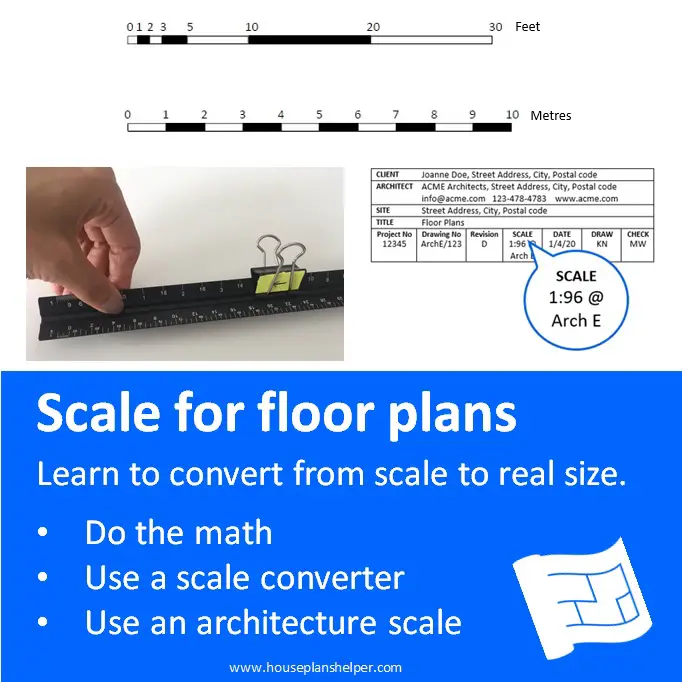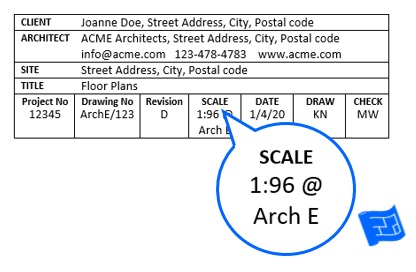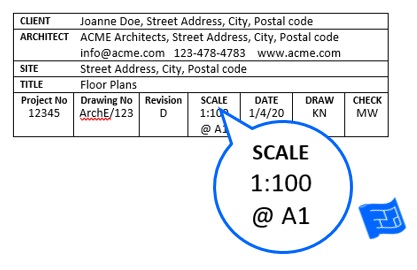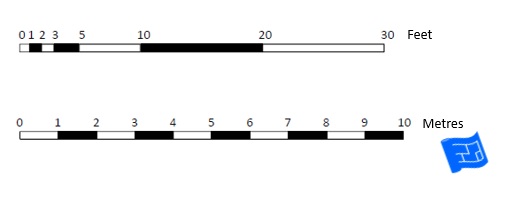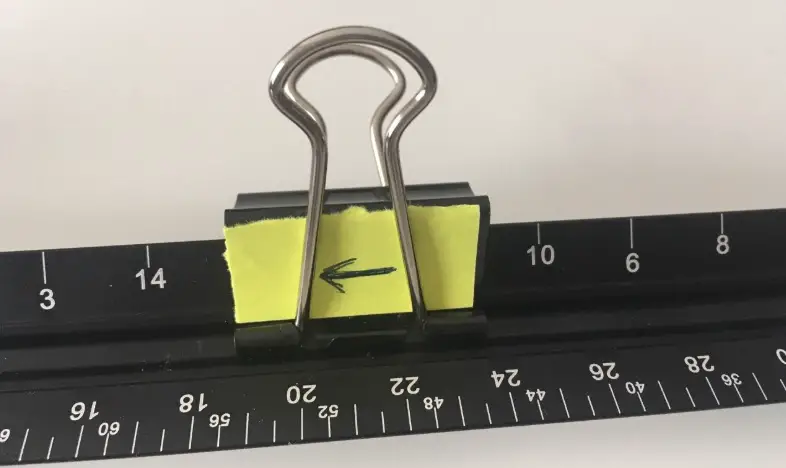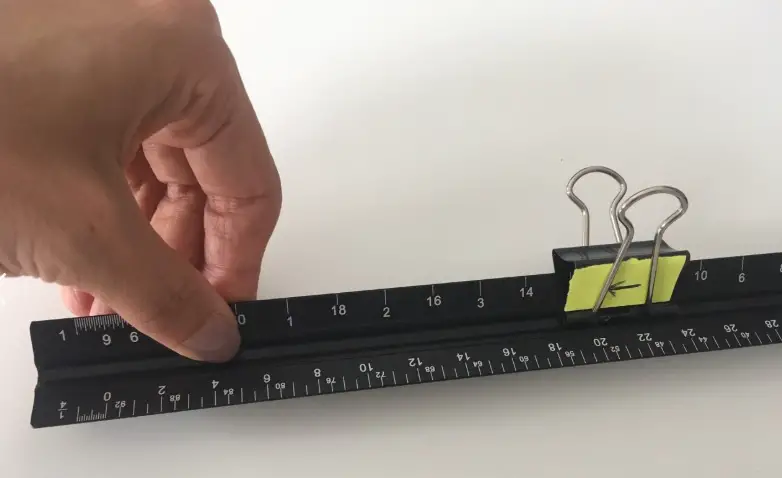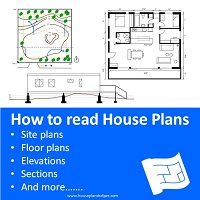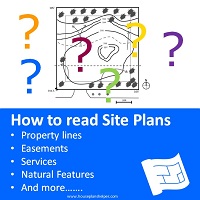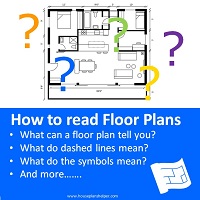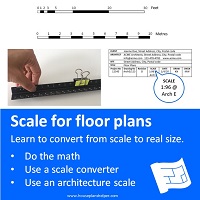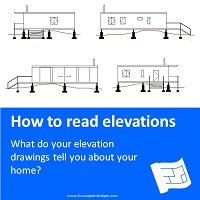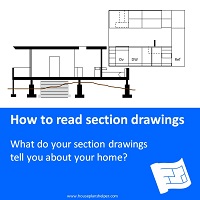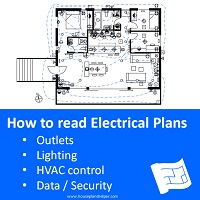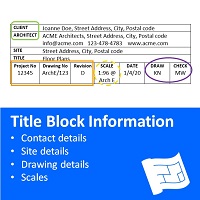- Home
- How to Read House Plans
- Scale for Floor Plans
Scale for Floor Plans
Understanding scale for floor plans is a really useful skill when you're building or remodeling your home.
Scale drawings are an indispensable part of your building or remodeling home project. You'll need to be able to read them to understand and give your approval for the design of your new home.
The focus of this page is on using scale to read floor plans. Check out how to draw floor plans for a discussion on using scale if you're drawing your own floor plan.
This page forms part of the how to read house plans series.
On this page we'll cover...
- What units of measure is my floor plan using?
- What scale is my floor plan using?
- Printing your floor plan to the correct scale
- Figure out the real size of something on your floor plan
Before we get started on scale for floor plans, we need first to talk about units.
What units of measure is my floor plan using?
The first thing to figure out is if the scale on your floor plan relates to feet and inches (the imperial system) or relates to millimeters, centimeters and meters (the metric system).
This usually depends on the region of your home. If you're in the US you're likely to be working in the imperial system. If you're in the UK, Ireland or Australia, it's probably the metric system. Canada is a bit of a mix but usually metric.
Before you go any further, figure out what system, imperial or metric, your drawings are using. Look to see what units the dimensions on the floor plan are marked in.
What scale is my floor plan using?
If your floor plan has a title block, the scale should be indicated there. It should tell you what the scale is for a particular paper size.
The scale for floor plans can be shown in two different ways:
- As equivalent measurements, eg 1/8" = 1' or 1cm = 1m, "an eighth of an inch represents 1 foot" or "1cm represents 1m"
- As a ratio eg 1:96 or 1:100, "one to forty eight" or "one to one hundred"
Common scales for imperial floor plans (feet and inches)
- 1/4 inch to a foot which means 1 inch on the paper represents 48 inches in real size (1:48).
- 1/8 inch to a foot which means 1 inch on the paper represents 96 inches in real size (1:96).
- 1/16 inch to a foot which means 1 inch on the paper represents 192 inches in real size (1:192).
Common scales for metric floor plans (mm, cm, m)
- 2cm to 1m which means 2cm on the paper represents 100cm (or 1m) in real size (1:50).
- 1cm to 1m which means 1cm on the paper represents 1oocm (or 1m) in real size (1:100).
- 1cm to 2m which means 1cm on the paper represents 200cm (or 2m) in real size (1:200).
Architects tend to work in millimeters, but this doesn't change the meaning of the scales above. For example, using the scale 1:100, saying 1mm represents 100mm is the same as saying 1cm represents 100cm.
No scale in the title block? Look for a scale bar
If there's no title block, another way to find the scale for floor plans is to look for a scale bar.
Working out the scale from an imperial scale bar
Here's what you need to do to work out the scale from the scale bar:
Measure the length of the scale bar - we're looking at the top bar and let's say it measures 3 3/4 inches.
This tells us that 3 3/4 inches (or 3.75 inches) represents 30 foot (the length of the bar).
30 foot = 30 x 12 = 360 inches.
So we now know that 3.75 inches represents 360 inches.
So 1 inch represents (360 / 3.75) = 96 inches.
You can see above that we need to convert fractions of inches into decimals. To make that a bit easier I've written them out here.
Working out the scale from a metric scale bar
Measure the length of the scale bar - for the bottom bar, let's say it measures 10cm.
This tells us that 10cm represents 10m.
So 1 cm represents (10 / 10) = 1m.
Much simpler for the metric system!

What if there's no scale for the floor plan?
If you’re looking at a floor plan with no scale or dimensions marked here’s a trick. If the kitchen is marked in the floor plan, a standard kitchen countertop is 2ft or 60cm deep. So if you measure how deep the countertop is on the plan, that’s what 2ft or 60cm is equivalent to.
To calculate what 1ft in real life is on the plan, divide the kitchen countertop measurement on the plan by 2.
To calculate what 1m in real life is on the plan, divide the kitchen countertop measurement by 60, then multiply by 100.
This will give you a rough idea of the dimensions and scale that you’re dealing with on the floor plan.
Printing your floor plan to the correct scale
When you're reading a floor plan you might be able to get most of what you want to know by looking at the floor plan on screen.
If you want to take accurate measurements your best bet is to get a print out of your floor plan. If you're looking at drawings that are meant to be printed on large format paper, this can pose a problem because it's unlikely you've got easy access to a large format printer.
Here's a few options for getting a print out of your floor plan.
- Ask your architect or design professional to provide you with a set of drawings printed out.
- Send your drawings to a printer/graphics store - check that they have a printer big enough to handle the paper size before you send the files.
- Print out a section of the floor plan to scale onto a size of paper that's convenient for the printer you have access to. Print a section of a pdf floor plan to scale.
Figure out the real size of something on a floor plan
OK, so you know what units you're working in, and you know what the scale for floor plans is, you're ready to use scale conversion to figure out the real life size of something on your floor plan.
There are two options for this:
- Using a simple ruler and doing a bit of maths.
- Using an architectural scale
Scale conversions
Let's do a few examples of scale conversions.
Scale for floor plans imperial conversion example...
Let's say we're looking at a floor plan and the scale is 1:48.
We measure the length and width of the open plan living space on the floor plan.
- Floor plan length = 9 and 1/8th inches or 9.125 inches
- Floor plan width = 3 and 1/8th inches or 3.125 inches
- Real size length = (3.125 x 48) = 150 inches or 12 foot 6 inches
- Real size width = (9.125 x 48) = 438 inches or 36 foot 6 inches

Top tip
I have two calculators available to help you make your calculations super quick (less clicks than a calculator!). Choose the scale that you're working in
You might find this table to convert fractions of inches to decimals useful.
Scale for floor plans metric conversion example...
Let's say we're looking at a floor plan and the scale is 1:50.
We measure the length and width of the bedroom on the floor plan.
Floor plan length and width (square room) = 6.8cm
Real size length and width = (6.8 x 50) = 340cm or 3.4m

Check that the scale conversion makes sense
Once you've done a scale conversion calculation just have a think to make sure it makes sense. Is your answer roughly what you expected it to be?
Using an architectural scale
Let's have a look at how to measure on a floor plan using an architectural scale.
The beauty of an using an architects scale to read scale for floor plans is that you don't need to do calculations to measure dimensions on your floor plan.
There's a great video to explain how to use an architect's scale...


A tip for using your architect's scale
Architect's scales have several scales and if you put your architects scale down it can be easy to lose track of where the scale you're using is.
Try putting a clip on your scale with a piece of paper with an arrow towards the zero of the scale you're using. This makes it very quick to get right back to where you need to be with your architects scale.
You can see how this clip is pointing towards the zero on the 1/4 inch to 1 foot scale.
More on How to Read House Plans
Converting fractions of inches to decimals
1/2 inch
| Length in inches | Decimal equivalent |
|---|---|
| 1/2 inch | 0.5 |
1/4 inch
| Length in inches | Decimal equivalent |
|---|---|
| 1/4 inch | 0.25 |
| 2/4 inch (same as 1/2 inch) | 0.5 |
| 3/4 inch | 0.75 |
1/8 inch
| Length in inches | Decimal equivalent |
|---|---|
| 1/8 inch | 0.25 |
| 2/8 inch (same as 1/4 inch) | 0.25 |
| 3/8 inch | 0.375 |
| 4/8 inch (same as 1/2 inch) | 0.5 |
| 5/8 inch | 0.625 |
| 6/8 inch (same as 3/4 inch) | 0.75 |
| 7/8 inch | 0.875 |
1/16 inch
| Length in inches | Decimal equivalent |
|---|---|
| 1/16 inch | 0.0625 |
| 2/16 inch (same as 1/8 inch) | 0.125 |
| 3/16 inch | 0.1875 |
| 4/16 inch (same as 1/4 inch) | 0.25 |
| 5/16 inch | 0.3125 |
| 6/16 inch (same as 3/8 inch) | 0.375 |
| 7/16 inch | 0.4375 |
| 8/16 inch (same as 1/2 inch) | 0.5 |
| 9/16 inch | 0.5625 |
| 10/16 inch (same as 5/8 inch) | 0.625 |
| 11/16 inch | 0.6825 |
| 12/16 inch (same as 3/4 inch) | 0.75 |
| 13/16 inch | 0.8125 |
| 14/16 inch (same as 7/8 inch) | 0.875 |
| 15/16 inch | 0.9375 |

